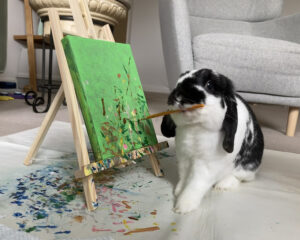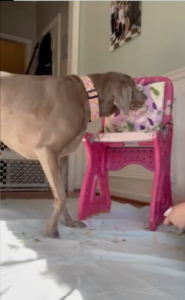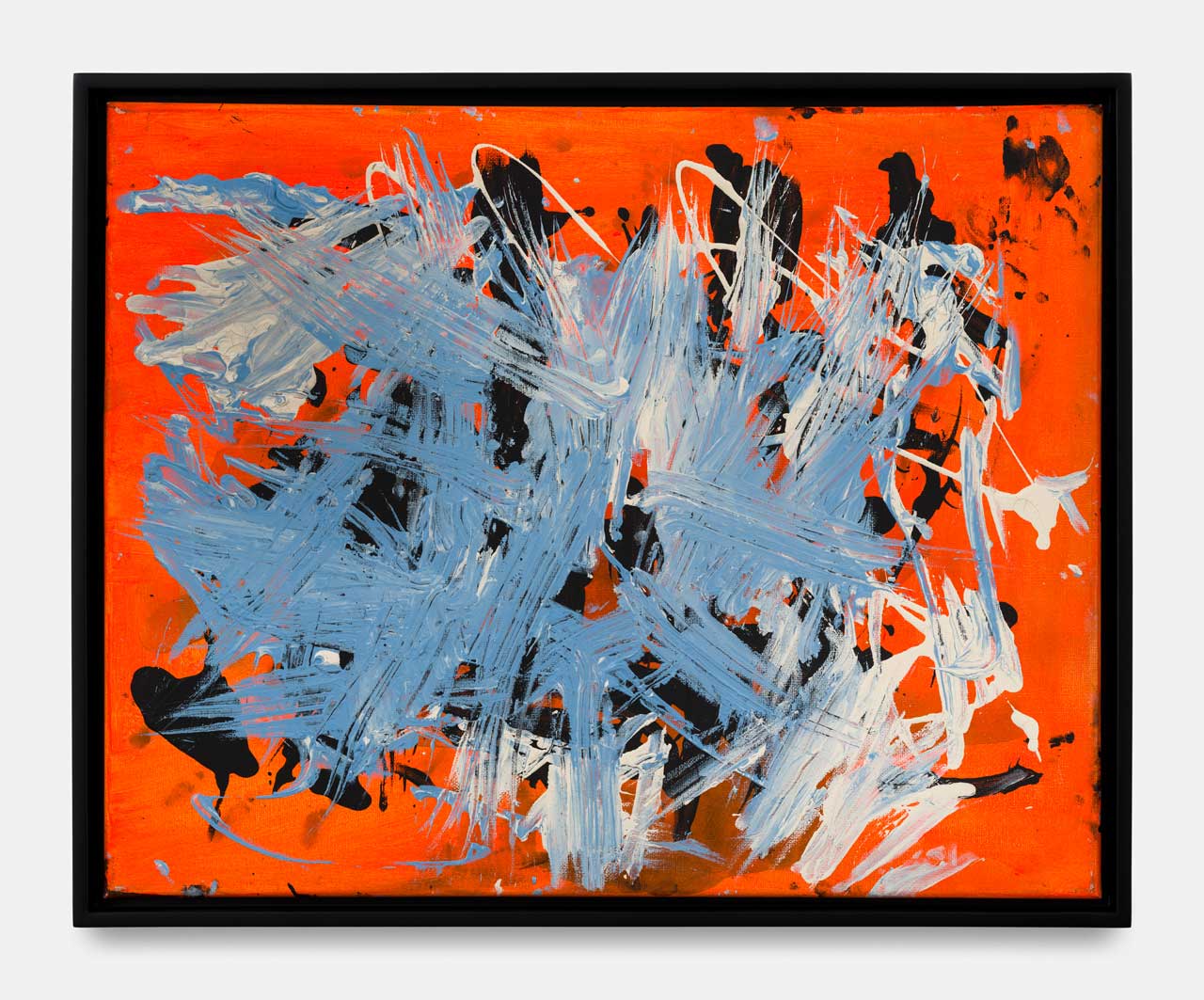AUBURN, Ala. – “Radical Naturalism: Daniel Newman,” the latest iteration in the Radical Naturalism series at The Jule Collins Smith Museum of Fine Art at Auburn University, is now on view. Available to the public through Sunday, December 8, Los Angeles-based artist Daniel Newman presents a collection of co-created paintings, paired with prints from the museum’s Louise Hauss and David Brent Miller Audubon Collection, prompting questions around themes of authorship, agency and work.
“In 2004 or so, while driving through the Florida Keys, I happened upon a small group of dolphins that were painting at a roadside rescue sanctuary,” said Newman, speaking about the origins of his co-painting project. “It was quite a sight to behold and really resonated with me.” Newman went on to describe the influence of the book Monkey Painting by Theirry Lenain, which largely focused on the work of Desmond Morris, who made hundreds of paintings in the 1950s with Congo, a chimpanzee and arguably one of the most well-known animal artists of all time. The book, Newman said, stuck with him and added to his project. “I started doing some research and discovered that many more species of animals are proficient painters,” he said.

Wally, one of Daniel Newman’s co-creators.
Deirdre Madeleine Smith, assistant curator of the Carnegie Museum of Natural History in Pittsburgh, Pennsylvania, spoke about the history and origins of animal art recently at The Jule in connection to Newman’s exhibition. “Humans have been making images of other animals for, more or less, as long as we have been making images – that is, for tens of thousands of years,” she noted, and our ideas around non-human animal creativity have been just as long lasting. “The cosmologies of several Indigenous cultures present in North America include a figure known as Spider Woman in Navajo culture or Spider Grandmother [in Hopi] who figures into stories of the origins of the planet but also the human ability to weave,” Smith said.
In more recent art history, partnering with non-human animal artists has been traditionally employed as an amusing or entertaining move, Smith notes, but still raises important questions around humans and our relationship to the planet and other species. “While the idea of a painting dog or a painting parrot is totally playful,” she says, “it also can connect us to really profound questions and ideas as well.”
Some of those questions include whether or not animals have creative autonomy. Many of the non-human animal artists include working dogs with a variety of jobs, ranging from herding livestock to detecting cancer, which can make visitors wonder if there’s a difference in artistic skill between working dogs and pets. “The main difference between working dogs and pets is that working dogs are highly motivated to perform certain tasks,” says Dr. Lucia Lazarowski, research assistant professor and canine behavior expert at Auburn’s College of Veterinary Medicine. “If we think of the painting that dogs do as a task that they’re trained to perform, then we might expect that working dogs are more engaged in the painting and more motivated to do the task if they find it enjoyable.”
A common misconception is that dogs only see in black and white, meaning visitors might assume the canine co-creators perceive extremely limited visual aspects of the paintings they create. “They actually see a limited spectrum of color compared to humans, so they see blues, greens, yellows and browns,” said Dr. Lazarowski. “What we’re seeing [in these paintings] is not necessarily what the dogs are seeing.” But dogs, like many other animals, rely on other senses beyond sight to navigate the world, including their sense of smell. “It’s possible that if dogs have preferences for certain paint colors, that just has to do with how pleasant or unpleasant the smell of the paint is.”
“I absolutely think dogs and other animals can be creative,” Dr. Lazarowski said, even if that creativity isn’t exactly how humans conceive of it. Newman’s exhibition prompts visitors from animal to art experts to ask how that creativity might manifest if creators’ senses are different than our own.

Margaux, one of Daniel Newman’s co-creators, paints at her easel.
Margaux, an eleven-year-old Weimaraner from Alabaster, Alabama, is one such artist exhibited alongside other animal artists. Orphaned a few days after birth, Margaux was bottle-fed and raised by her adoptive family, and after learning to paint at age seven, splits her time between using her sense of smell to detect cancer as a dedicated member of the Sniff 4 Life Cancer Detection Dog team and art. “She was really excited about learning something completely different,” said Ashley McClure, Margaux’s owner. “Once she had those basic skills down, we just got some paint and put some paint on paper, and from there, it was just about her favorite thing to do.”
McClure noticed that Margaux started to experiment with different brushes they provided, using each tool in a different way to get varied effects on the canvas or paper. And while she doesn’t appear to have a favorite color, Margaux did seem to emulate her human artist companion, using greens where Newman used greens and reds where Newman used reds. They even painted together recently, when Newman visited Auburn for his exhibition’s installation. “He was so generous with her,” McClure said. “And patient, because she’s never painted with another person besides me, so she was very excited.”
But it all begs the question: is what Margaux – and Newman’s other animal collaborators – doing art? “Obviously, I can’t be in her mind to know what her thought process is, and I don’t know if she knows she’s creating something,” McClure said. “But when I see the way she enjoys it, there’s something special.”


